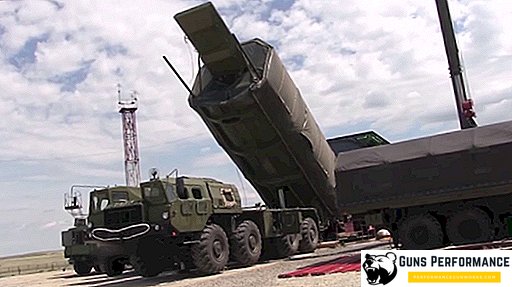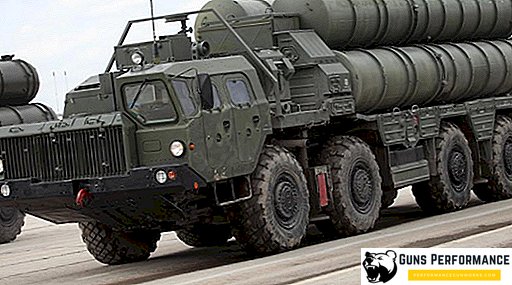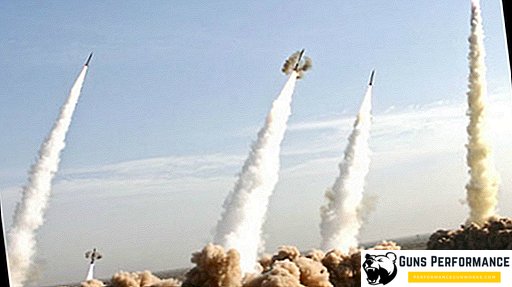ZIL-118 - Soviet minibus, which differed futuristic design. The reason for the creation of a new product in the late 50s of the last century was the decline in the production of high-class transport. A new car based on the ZIL-111 chassis was developed to support a team of professional craftsmen working on premium cars.
General information about ZIL-118
Technological equipment innovation did not differ. The special attention was demanded by design of the minibus. The name "Youth" was invented by Tatyana Kiseleva, who worked on the creation of the interior. Everything is done to deliver maximum comfort to passengers during the trip.
The main feature of the transport was the glazing. It created a feeling of lightness and ease during movement. The windows along the sides formed one panoramic, and complemented them half glass roof. The roof was also equipped with a hatch that can be opened.
Exterior turned out unusual, he was ahead of his time. Eric Szabo and Alexander Olshanetsky worked on its creation. Every detail is made at a high level. Glance catch beautiful side mirrors, unusual forms of lamps, reminiscent of something from a number of cosmic.

The transport was highly appreciated by N.S. Khrushchev. He will be satisfied with the appearance, technical equipment and level of comfort in the cabin. In 1967, "Youth" collected 12 awards at the international automobile exhibition. And the main victory was that the car had no competitors. It has become unique and inimitable.
Experts promised a new development a huge success, but mass production demanded serious funding. The production plan for 7 years did not satisfy the requirements. Constant problems prevented the launch of the series, and while it was constantly postponed, engineers continued to improve their offspring.
The history of the development of ZIL-118
High officials were skeptical. Despite this, the project team worked, practically, in a secret mode. Development began in 1960. The first prototype was submitted a year later. The main parameters are preserved from the limousine of the 111th model. The dimensions of the minibus turned out more.
When creating the first layouts, designers were inspired by the Chevrolet Corvair Greenbier Sportswagon. From him took the carriage layout. Having a large size, the transport exceeded the American equivalent in lightness and harmony. Avtolegenda USSR strongly stood out against the background of Soviet buses of the time.
The first prototype went to the tests in urban environments. He walked several hundred kilometers, proved to be a reliable car that can carry people. After that, the Likhachev plant management looked closely at the project and sent a request for financing the serial production to the government of the country.
After a positive assessment of Khrushchev, everyone started talking about the great prospects of the new minibus. Khrushchev represented the interests of the product in the government, after which the political basis made a plan of release for the coming years. The launch of production turned into a collapse - in five years they collected seven copies. The company needed to produce 1000 units per year to make the project profitable.

Engineers did not give up, creating new vehicle modifications. With the help of them expanded scope. In the mid-60s, a taxi service appeared in one taxi organization ZIL-118 Youth. It was used as a taxi. Hospitals were offered a model with an “A” index, which received a superstructure on the roof, which allows doctors to work in comfortable conditions.
The lack of funding was due to the lack of interest in transport among the top officials of the state. They are used to driving in premium limousines. The unusual design did not fit into the strict economy of the Union. In subsequent years, the Americans offered to establish a joint release, and Ford wanted to buy the patent, but was refused by the country's leadership.
In 1971, made another attempt to implement the plans. There was a modification with the index "K". Design adapted to the realities of the Soviet Union. He lost his uniqueness, became angular and typical. New version crashed. Not a single copy appeared on the streets of Moscow.
Despite this, "K" attracted the attention of various structures. They needed several copies to create special machines. The USSR State Security Committee equipped the vehicle for a mobile radio intelligence station. Another option is a mobile command post for the Secretary General, through which he could open aimed fire at cities with nuclear missiles.
In the 90s, the Likhachev plant decided to change the path of development. Having received a ten-year order for the release of half a dozen cars each year, the specialists created a new minibus, which received the number "3207". The prevalence of new cars did not receive because of the high cost and moral old age. A year later, the story ended when they introduced a standard for the height of the cabin of the bus (half a meter).

Characteristics and device ZIL-118
Specifications avtolegendy USSR following:
- Capacity - up to 17 people;
- Length - 6.8 meters;
- Width - 2.1 meters;
- Height - 2 meters;
- Wheelbase - 3.76 meters;
- Clearance - 20.5 centimeters;
- Weight - 5.3 tons;
- Engine capacity - 6 liters;
- The number of cylinders - 8;
- Power - 150 horsepower at 3.6 thousand rpm;
- The maximum speed is 120 km / h;
- Acceleration to 100 km / h - 60 seconds;
- Average fuel consumption - 28 liters per 100 kilometers.
The developers planned to create a comfortable bus for the transport of passengers around the city. The main feature is the design, which differed from other buses traveling in the cities of the USSR. Young, but talented specialists worked on the project. In 1959, the project was registered under the name ZIL-118.
Body and interior of the minibus "Youth"
Body length slightly exceeded 6.8 meters. The wheelbase received 3.76 meters, and the width was 2.1 meters. Such dimensions allowed to equip in the cabin 17 seats for passengers. Facing panels were made of steel. They were connected to the frame by welding. The space between them was filled with polyurethane, which ensured high quality thermal and sound insulation.
The driver's cabin is separated from the passenger area by a partition. Half glazed, in the middle there is a door. The power plant is closed by the hood, which consists of two reclining parts. When the hood is fully opened, the technician has free access to all technical nodes. The dashboard and design of the steering wheel copied from the 111th limousine model. The driver's seat is adjusted in the longitudinal and vertical planes.

The width of the front door is 88 centimeters. This size is enough for free landing and disembarking passengers. If difficulties arise, the seat closest to the entrance can be tilted, which will give even more space. The wide windshield provided the driver with a complete overview of the road situation.
In the back of the car there is a door that is necessary for loading luggage. If there is not enough free space, you can dismantle the rear row of seats. Cabin height - 1 395 millimeters. It was enough for boarding people, but it became impossible to transport standing passengers. For a comfortable temperature in the cabin in the winter season in the design there is heating equipment. It works by cooling the engine's cooling system, ventilation, and a windshield blower. In the warm season, the vents or the central hatch on the roof were opened to access the fresh air salon.
For movement in inclement weather, the driver uses a windshield washer and two wipers. To improve the view there is a central rear-view mirror. Dazzle by the sun is impossible due to the presence of sun visors. At the driver’s disposal there is a microphone device for prompt announcement of passengers. Ashtrays, coat hooks, lights and a radio are available to passengers.

Motor and gearbox ZIL-118
Under the hood of a minibus installed a simplified version of the power unit with a premium limousine. It was distinguished by high reliability and stability of work. With 150 horsepower could accelerate to 120 km / h. Two fuel tanks contained 160 liters of fuel. Full refueling enough for 575 kilometers.
Automatic transmission equipped with hydromechanical transmission. This simplified the management of transport, improved start from a place and acceleration. Thanks to such a gearbox, the load on the power unit and power transmission components has decreased. The stock of a working resource of the minibus increased. The rest of the technical equipment remained unchanged. With the ZIL-111 passed suspension, chassis, steering gear and wheels.
Test of endurance
Avtolegend USSR passed the harsh practical tests. She was sent on trips on intercity routes, on the way there were almost all kinds of roads. This allowed the designers to learn about strengths and weaknesses. The disadvantages were later corrected, and the advantages were emphasized. After an extensive trial, the Likhachev plant managers took the side of the young development team and appealed to the government of the country for help in deploying a mass production of vehicles.
What can be concluded?
ZIL-118 is another legend of the domestic engineering industry, which, despite its high potential, did not see the mass production. According to top officials, the unique transport that received international awards did not fit into the country's economy.












